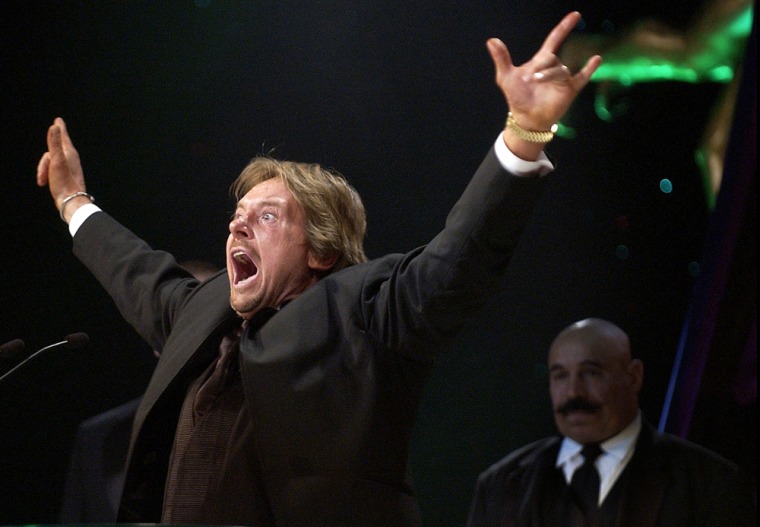World Wrestling Entertainment is not very different from media players Viacom, Time Warner, Marvel Enterprises, and Disney. Think about it: They all have a stable of legendary characters they rely on to generate revenue. Viacom has SpongeBob SquarePants. Time Warner has Bugs Bunny. Marvel has Spider-Man. And Disney has Mickey Mouse.
WWE has built up a large portfolio of wrestling personalities over the years, too. It represents a fount of tremendous value into which WWE Chairman Vince McMahon should dip time and time again to create value.
Judging by his company's latest press release, I'd say McMahon gets it. I'd also be willing to bet that a majority of shareholders will be supportive. What WWE wants to do is monetize its stable of iconic performers by linking an overall brand identity to it. They are calling the plan the "WWE Legends" initiative. All manner of media and merchandise will be involved: subscription video on demand, action figures, video games, DVD releases, and book publications. In addition, fans can look forward to live appearances by authentic legends at "fantasy weekends."
There are probably more than a few taking the other side of this trade. After all, shouldn't Vince be more concerned with pushing his current crop of superstars? The ones most relevant to the youth of today? The ones who capture the imaginations of those most willing to part with money for DVDs, pay-per-views, and tickets to live events? Aren't John Cena and Triple H more important in driving revenues than that old guy in the kilt, Rowdy Roddy Piper?
Sure, but this new strategy is still unquestionably vital. To begin with, consumer products are an important sales component for WWE. Plus, you have to consider exactly what is going on here: Vince is trying to put a plug in the seepage of his audience. He wants to end the limits that demographic borders currently place on his ability to smooth out the up-and-down cyclicality of wrestling.
Consider Rick Munarriz's February article on the company. He opened the piece with a statement that laid out a host of challenges for the grapplers: "I'm not sure exactly when I outgrew watching wrestling on TV," Rick wrote.
This, of course, is the problem: Kids outgrow the spectacle of the squared circle much too early for Vince's taste. These older demographics must be spurred to collect action figures and attend live events just like the young hipsters of today. Highlighting the "WWE Legends" has a great chance of imbuing nostalgic feelings in the upper spectrum of the 18-49 demo. Once you get someone wistfully musing over what made their youth grand, you're that much closer to getting them to open their wallets and lay some money down for a product that will help recapture that feeling.
WWE's motives for the "Legends" initiative were apparent right at the headline, but Senior Vice President for Consumer Products Donna Goldsmith summed it up perfectly when she spoke of the conundrum of the fallen fan: "Sometimes you need to remind people of your past to get them to be part of your future." She should frame that aphorism and make sure every WWE underling reads it. Going forward, the key to WWE's future cash flows might hinge on its regal legends.
Wrestle some more Takes, jabroni!
